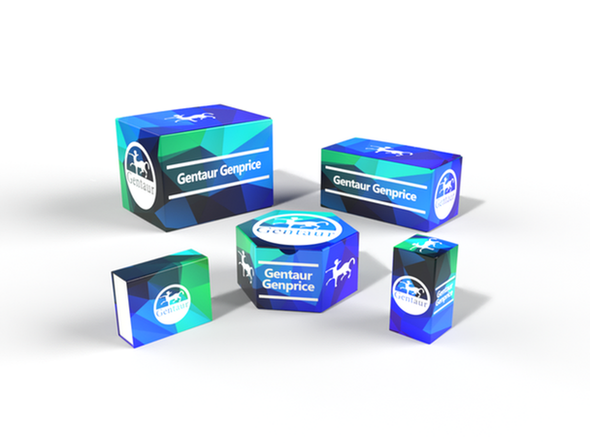749
Human NKG2D ligand 4 (RAET1E) ELISA Kit | KTE60982
- SKU:
- 749-KTE60982
- Availability:
- Usually ships in 5 working days
Description
Human NKG2D ligand 4 (RAET1E) ELISA Kit | KTE60982 | Gentaur UK, US & Europe Distribution
Application: This Human NKG2D ligand 4 (RAET1E) ELISA Kit employs a two-site sandwich ELISA to quantitate RAET1E in samples. An antibody specific for RAET1E has been pre-coated onto a microplate. Standards and samples are pipetted into the wells and anyRAET1E present is bound by the immobilized antibody. After removing any unbound substances, a biotin-conjugated antibody specific for RAET1E is added to the wells. After washing, Streptavidin conjugated Horseradish Peroxidase (HRP) is added to the wells. Following a wash to remove any unbound avidin-enzyme reagent, a substrate solution is added to the wells and color develops in proportion to the amount of RAET1E bound in the initial step. The color development is stopped and the intensity of the color is measured.
Detection Method: Colorimetric
Conjugate: N/A
Sample Type: Cell culture supernatants#Serum#Plasma#Other biological fluids
Assay Type: Multiple steps standard sandwich ELISA assay with a working time of 3-5 hours. It depends on the experience of the operation person.
Kit Component: • Human NKG2D ligand 4 microplate
• Human NKG2D ligand 4 standard
• Human NKG2D ligand 4 detect antibody
• Streptavidin-HRP
• Standard diluent
• Assay buffer
• HRP substrate
• Stop solution
• Wash buffer
• Plate covers
Features & Benefits: Human NKG2D ligand 4 (RAET1E) ELISA Kit has high sensitivity and excellent specificity for detection of Human RAET1E. No significant cross-reactivity or interference between Human RAET1E and analogues was observed.
Calibration Range: Please inquire
Limit Of Detection: Please inquire
Usage Note: • Do not mix components from different kit lots or use reagents beyond the kit expiration date.
• Allow all reagents to warm to room temperature for at least 30 minutes before opening.
• Pre-rinse the pipet tip with reagent, use fresh pipet tips for each sample, standard and reagent to avoid contamination.
• Unused wells must be kept desiccated at 4 °C in the sealed bag provided.
• Mix Thoroughly is very important for the result. It is recommended using low frequency oscillator or slight hand shaking every 10 minutes.
• It is recommended that all samples and standards be assayed in duplicate or triplicate.
Storage Instruction: The unopened kit should be stored at 2 - 8°C. After opening, please store refer to protocols.
Shipping: Gel pack with blue ice.
Precaution The product listed herein is for research use only and is not intended for use in human or clinical diagnosis. Suggested applications of our products are not recommendations to use our products in violation of any patent or as a license. We cannot be responsible for patent infringements or other violations that may occur with the use of this product.
Background: Members of the RAET1 family, such as RAET1E, are major histocompatibility complex (MHC) class I-related genes located within a 180-kb cluster on chromosome 6q24.2-q25.3. RAET1 proteins contain MHC class I-like alpha-1 and alpha-2 domains. RAET1E and RAET1G differ from the other RAET1 proteins in that they have type I membrane-spanning sequences at their C termini rather than glycosylphosphatidylinositol anchor sequences. The deduced 263-amino acid protein contains alpha-1 and alpha-2 domains, a transmembrane domain, and a short cytoplasmic tail. Real-time RT-PCR detected highest expression in skin, with much lower expression in trachea and trace levels in other tissues.
Alternative Names: RAET1E; LETAL; MGC125308; MGC125309; RAET1E2; ULBP4; bA350J20.7; lymphocyte effector toxicity activation ligand
Search name: RAET1E; LETAL; MGC125308; MGC125309; RAET1E2; ULBP4; bA350J20.7; lymphocyte effector toxicity activation ligand
Tag: RAET1E










